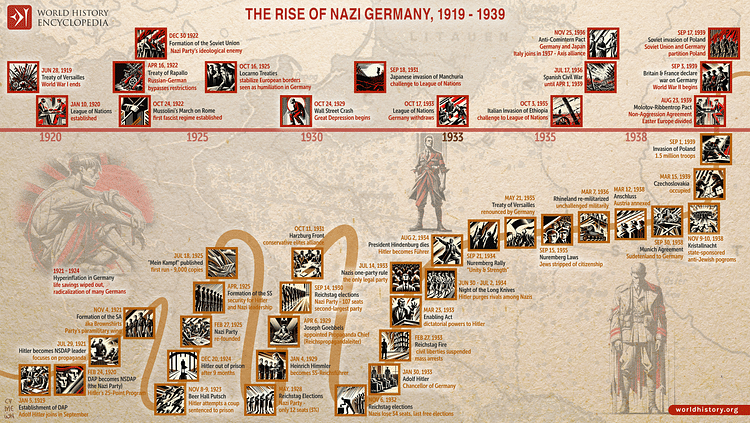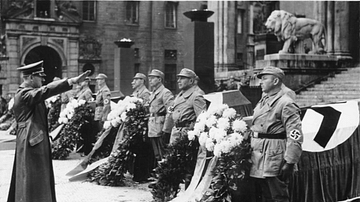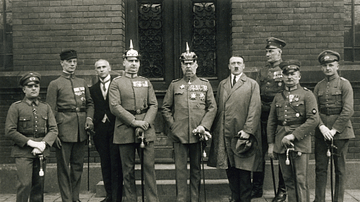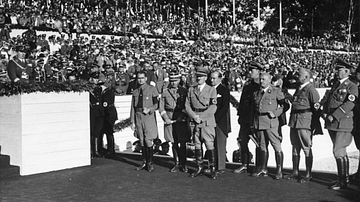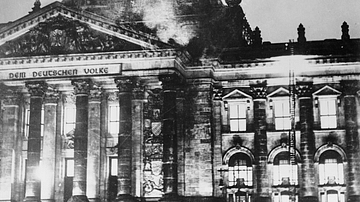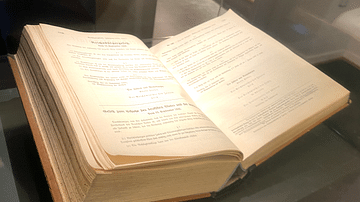Illustration
This infographic illustrates the rise of Nazi Germany in the aftermath of the First World War (1914-18), when the Treaty of Versailles (1919) imposed harsh reparations and territorial losses on Germany, leading to widespread economic hardship and resentment. This created fertile ground for extremist ideologies, and in the 1920s, the National Socialist German Workers' Party (NSDAP). the Nazi Party, led by Adolf Hitler, gained popularity, promising to restore German pride and rebuild the economy. Hitler was appointed Chancellor in January 1933, and after consolidating power through the Reichstag Fire and the Enabling Act, the Nazis dismantled democratic institutions. By 1938, Nazi Germany had begun territorial expansion, including the annexation of Austria and the Sudetenland. The invasion of Poland on September 1, 1939, triggered the Second World War (1939-45), marking the culmination of Nazi ambitions.
About the Author
Cite This Work
APA Style
Netchev, S. (2024, October 07). The Rise of Nazi Germany, 1919 - 1939. World History Encyclopedia. Retrieved from https://www.worldhistory.org/image/19526/the-rise-of-nazi-germany-1919---1939/
Chicago Style
Netchev, Simeon. "The Rise of Nazi Germany, 1919 - 1939." World History Encyclopedia. Last modified October 07, 2024. https://www.worldhistory.org/image/19526/the-rise-of-nazi-germany-1919---1939/.
MLA Style
Netchev, Simeon. "The Rise of Nazi Germany, 1919 - 1939." World History Encyclopedia. World History Encyclopedia, 07 Oct 2024. Web. 20 Feb 2025.

